When it comes to stocking stuffers, one product hits a perfect harmony: the PEZ dispenser. Part character, part candy, and all collectible, the trinket has delighted kids and collectors around the world for decades. And yet when Austrian confectioner Eduard Haas III invented PEZ, he set out to corner an entirely different market.
By the 1920s, Haas already owned a successful baking goods business in Austria that he’d inherited from his father. Eduard Haas II founded the Ed. Haas Company in 1894 to sell the baking powder invented by his father, Eduard Haas I, and other ingredients. Eduard Haas III took over management of the company when he turned 18, and created its first newspaper advertisements for their pre-measured cake mix.
The success of Haas baking powder inspired the young businessman to pursue his interests in the confectionary world. An anti-smoking advocate, Haas III wanted to create a tablet that would “not only refresh one’s breath but could also help consumers who were anxious to cut down on smoking or overeating,” writes Shawn Peterson, company historian at PEZ Candy, Inc., in PEZ: From Austrian Invention to American Icon.
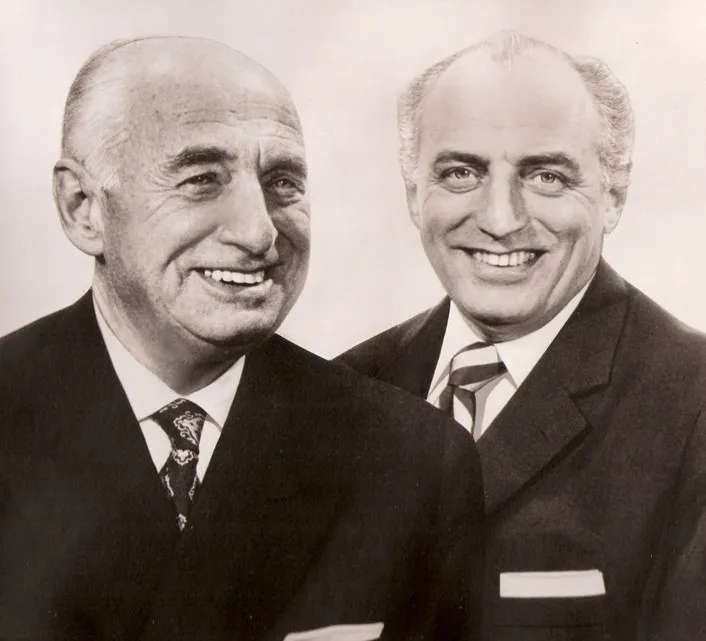
Strong peppermint flavoring seemed like just the trick, but peppermint oil was expensive and primarily used in pharmacies. Peppermint-flavored products were usually made by boiling ingredients, which wasted peppermint flavoring because it evaporated in the heat. So Haas Company chemists developed a tablet manufacturing process that’s cold. PEZ tablets are made by compressing confectionary sugar and flavoring with thousands of pounds of force until each brick holds together. The candies didn’t originally come in dispensers but were instead packaged in metal tins or foil-paper wrapping.
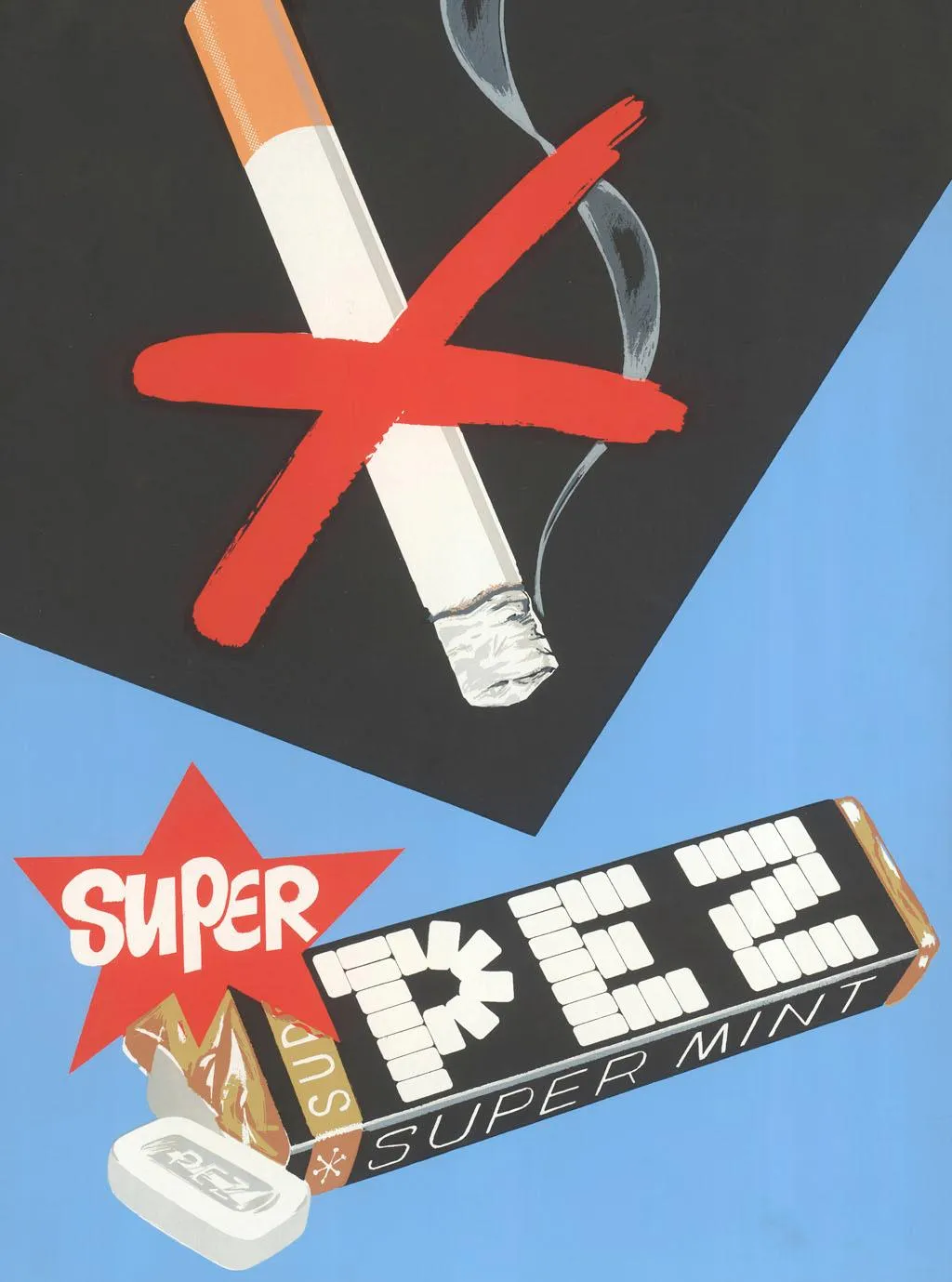
Before he could sell the new product, Haas needed a name—something snappy and universal. He took the first, middle and last letters from the German word for peppermint, pfefferminz, and created PEZ.
The first PEZ candies, called PEZ Drops, were marketed as a luxury item for adults. Advertisements touted health benefits and showed couples about to kiss with the caption, “Deliciously fresh breath!” Early ads proclaimed, “No smoking, PEZing allowed!” Later, the Ed. Haas Company hired young women to drive around crowded locations in PEZ-branded trucks, wearing PEZ uniforms, and stand near busy squares and major events to hand out free samples of the peppermint treats. “Already PEZing?” asked pin-up girls in ads. The women, called PEZ Girls, “would soon arrive at famous landmarks around the world, offering the public a new way to freshen breath and refrain from smoking,” writes Peterson.
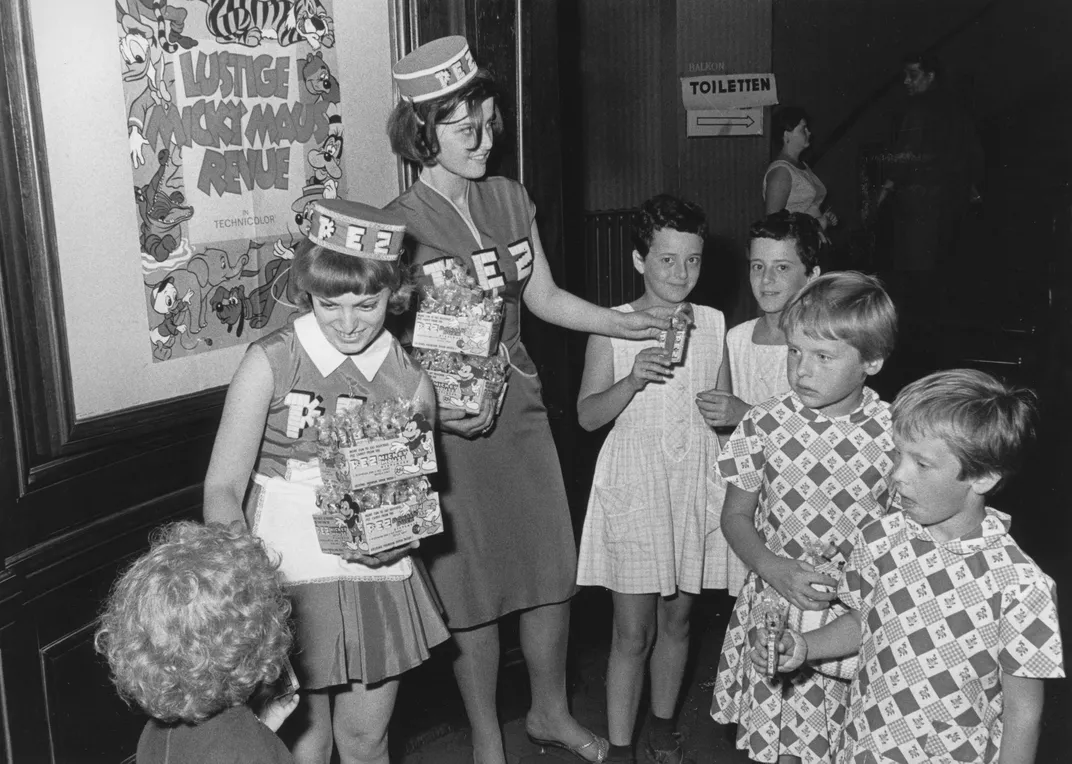
PEZ’s popularity required Haas’ company to convert factories from baking powder and other production to more and more peppermints. Mechanized tablet-forming processes pushed PEZ to change course, in the 1930s, from round tablets to their now-familiar rectangular ones.
PEZ tablets spent more than 20 years without a handy carrying container. The metal tins or paper rolls were meant to be carried in one’s pocket. But in the late 1940s, Haas realized that customers wanted a quick way to pick out a tablet with one hand, or share with a friend without dirtying the candies in the tin. Haas hired engineer Oscar Uxa to create a solution, and in 1949, the first PEZ dispensers were sold at the Vienna Trade Fair. The U.S. patent was granted in 1952.
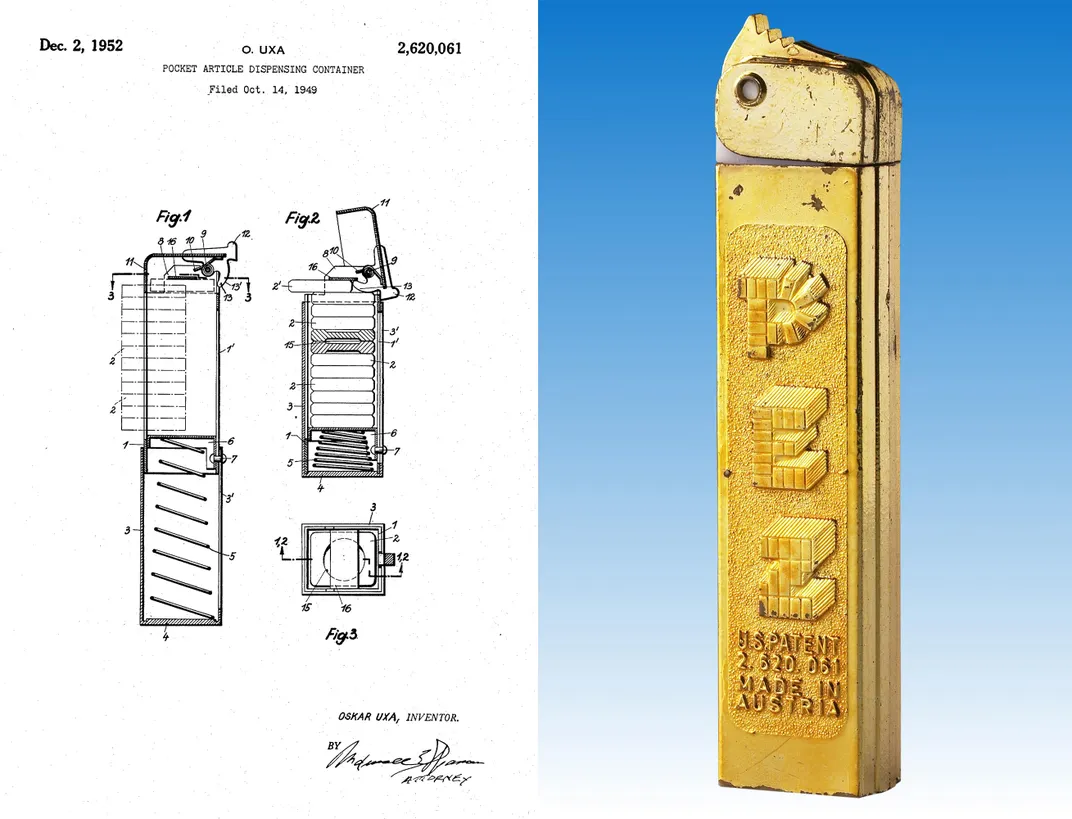
The contraptions look more like cigarette lighters than PEZ dispensers that we’d recognize today. (Uxa had filed a patent in 1934 for a self-closing, one-handed lighter.) But the engineer most likely based the PEZ dispenser design on the size of a packet of PEZ tablets and made it handheld and slim enough to fit in a pocket, according to Peterson. The original dispensers, like all PEZ dispensers today, were made out of plastic.
Plastic molding has been around since the 1800s, says Peter Liebhold, a curator and historian of manufacturing at the Smithsonian's National Museum of American History. But plastic production really took off after World War II. Raw materials are turned into specific shapes through a number of methods: casting, cutting, forming and injection molding. PEZ fashioned their dispensers with the latter.
“Casting is as old as the hills. You take the hot metal and pour it into a mold and it’s a solid. Injection molding is like casting, except under more pressure,” explains Liebhold. “Instead of taking a ladle of hot material and pouring it into a mold and letting gravity do the work, you take the hot material, and you push it into the mold. That allows you to make it much thinner and have a lot more detail.”
The first PEZ dispensers, which are now called “regulars,” were such a success in Europe that the Ed. Haas Company needed to construct a second factory in Austria to keep up with demand. Ads showed off the convenience of a one-handed dispenser that was easy to use while driving and easy to share with others. Haas turned his attention to the American market. But there, PEZ’s meteoric rise came to a screeching halt. There just wasn’t much interest in smoking abatement, and PEZ needed to pivot fast.
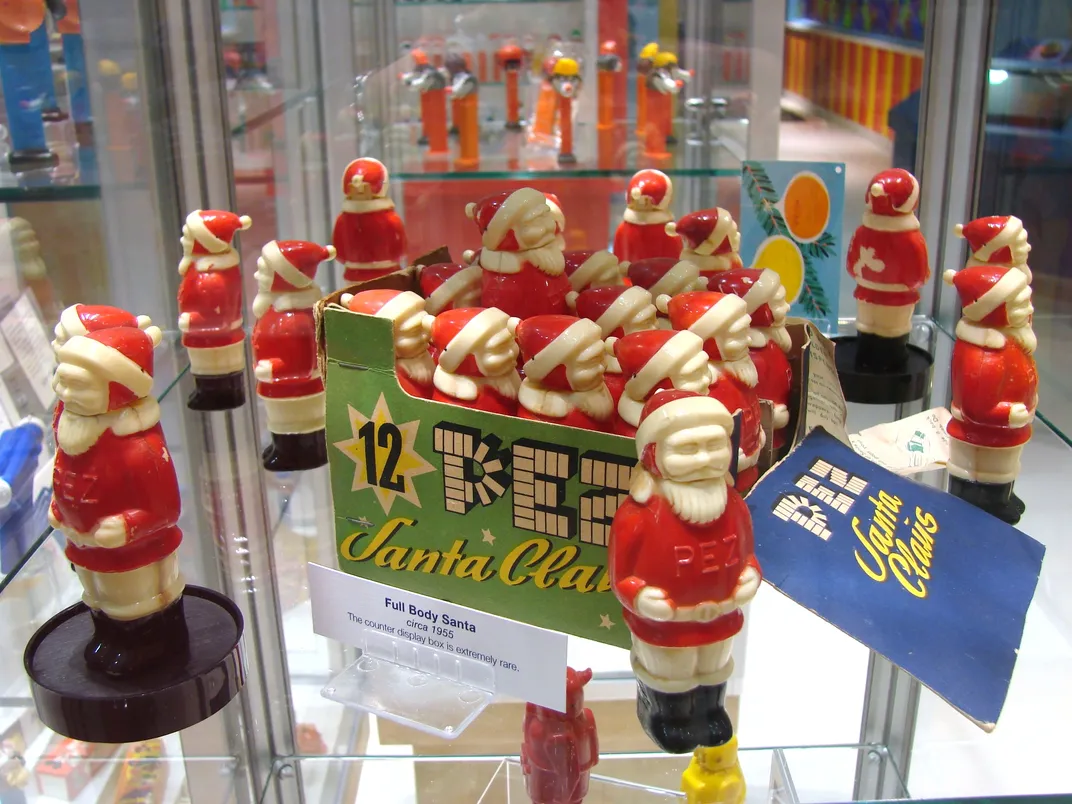
The company’s solution: change the tablets’ flavor from minty to fruity, and begin marketing to kids. In 1955, at the urging of vice president of U.S. operations Curtis Allina, PEZ introduced its first character-shaped dispensers—a robot and Santa Claus. Today, Santa Claus is PEZ’s best-selling design.
Different from modern dispensers, the first character PEZ dispensers had full-body designs, with a full red suit for Santa Claus and all the metal-looking nuts and bolts on the robot. In 1956, PEZ released a space gun-shaped dispenser that shot out fruit-flavored tablets. The complex dispensers were expensive to manufacture. At five-times the cost of a normal candy bar, they sold poorly.
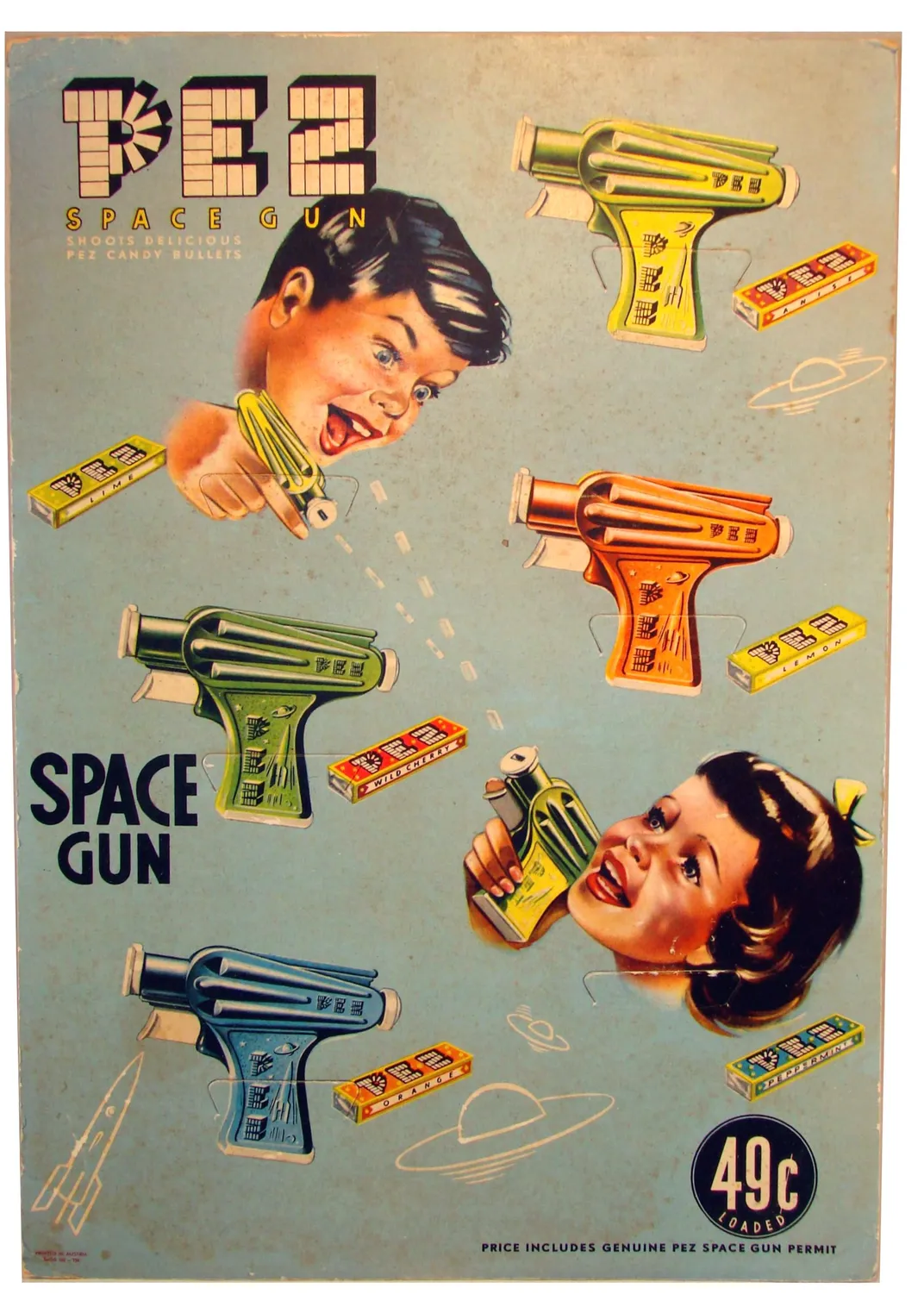
“The Santa and robot dispensers had internal parts and glue seams and used a lot of plastic,” writes Peterson. “Space gun assembly was labor-intensive and also used a lot of expensive plastic. Assembly would have to be mechanized; cost to manufacture would need to be reduced.”
PEZ adjusted again and created a new toy-like dispenser that struck a balance between the original regulars and the character designs: a character head on top, and a rectangular body that held the candy underneath. The first PEZ dispenser with this anatomy was a witch introduced at Halloween in 1957. The next year, the company struck gold with its first licensing deal for a Popeye dispenser.
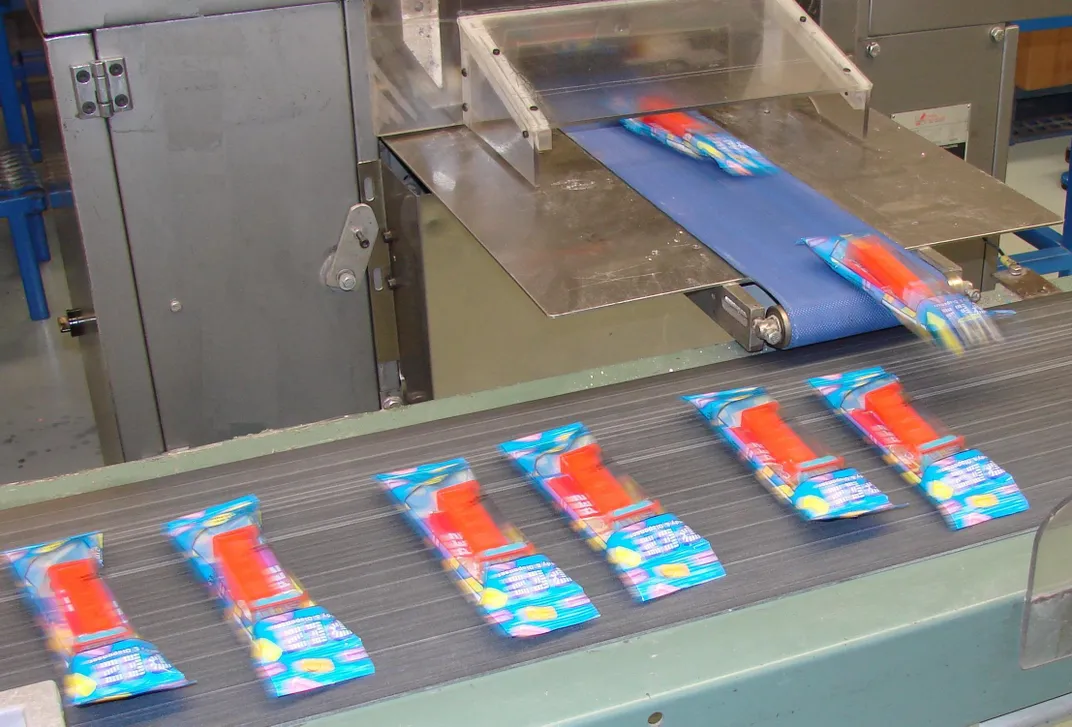
With a combination of licensing deals and original designs, PEZ climbed to its status as a pop-culture icon. In 1973, PEZ built a candy factory and warehouse in Orange, Connecticut, to better reach American consumers. The factory now manufactures all PEZ candies for the U.S. and Canada—about 12 million tablets per day, five days per week. As of 2011, the campus includes a Visitor Center where anyone can see the world’s largest PEZ dispenser and learn how PEZ candies are made.
Today, PEZ head designs are sketched out by artists at PEZ or by whoever holds the license for the character. A sculptor creates a 3D mockup of the head, and when the design is approved, the artist’s prototype is used to create the machinery for injection molding. Dispensers are manufactured in Hungary, China and Vietnam.
“There’ll be a tremendous amount of work in terms of concept, design, prototyping, casting, and it’ll be a global production,” says Liebhold. “There’s really a huge amount of work that goes into the most pedestrian of products. A PEZ container is about as pedestrian as you can get.”
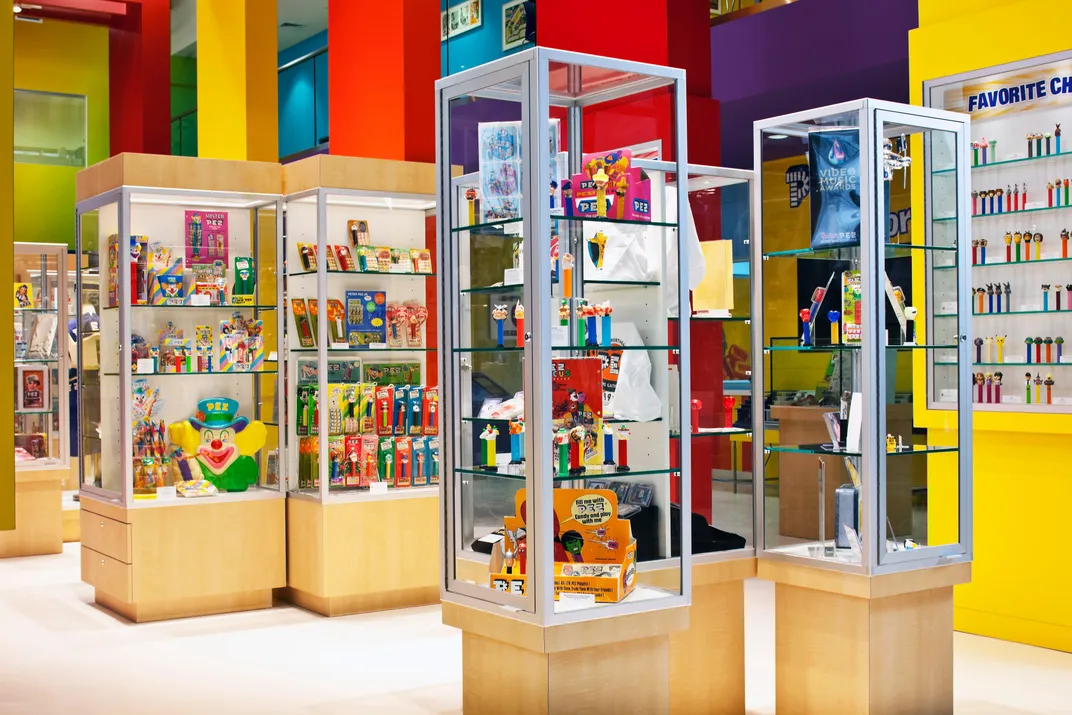
Haas died in 1986, leaving behind a candy empire. A few years later, PEZ dispensers were modified to include feet at the base to help the dispensers stand when on display. The presence or lack of feet now demarcates modern versus vintage dispensers for collectors, who held their first PEZ convention in Ohio in 1991. Ohio PEZ conventions have continued annually ever since, and more conventions have popped up around the world, allowing collectors to celebrate their shared hobby, show off their most coveted items and sell their spares.
Dispensers can sell for anywhere from a few dollars, to several hundred or even thousands of dollars. One of the rarest PEZ dispenser designs, a political donkey dispenser from 1961, sold for $12,500 in 2013. And a pair of political donkey and elephant dispensers sold together for $20,000 the same year. Dispensers with fruit-shaped heads from the 1970s can also fetch a high price—pears have gone for $500 to $1,000 and pineapples for $3,000. Original full-body Santa Claus PEZ dispensers are currently selling on eBay for just over $100.
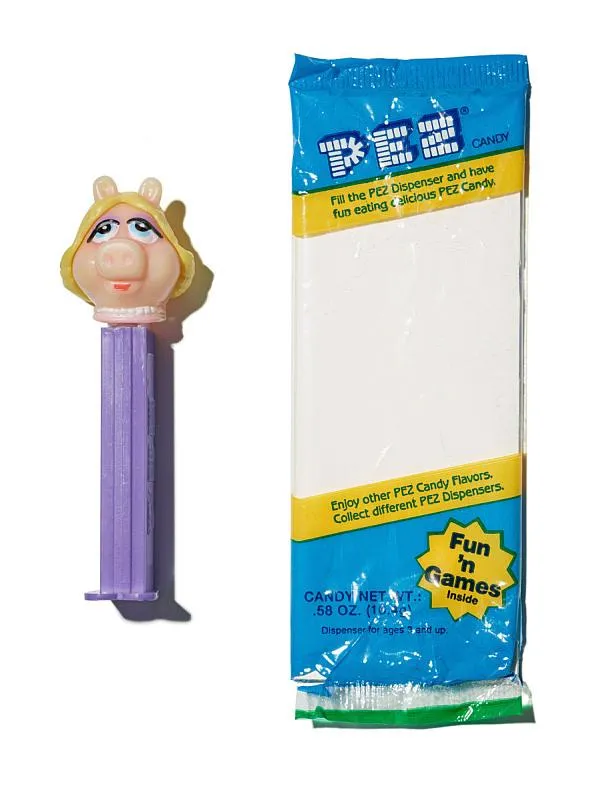
PEZ has designed about 1,400 different character heads and innumerable variations. A few have made their way into the National Museum of American History, including a set of Muppets dispensers with Kermit the Frog, Gonzo, Fozzie Bear and Miss Piggy. A collector might point out that the earliest Miss Piggy dispensers had fabulous, swooping eyelashes, but the Smithsonian’s has straight eyeliner, marking it as a simplified design from a later manufacturing run. This year, PEZ released a new Marilyn Monroe design, a Wawa holiday truck dispenser, and a Star Wars dispenser set of Mandalorian and The Child (also known as Baby Yoda).
Collectors “strive to have one example of everything produced,” says Liebhold, a much different mindset from the museum’s goal to pick specific, iconic objects. “Pez is nearly 100 years old, which speaks to its real historical significance: successful marketing.”
/https://tf-cmsv2-smithsonianmag-media.s3.amazonaws.com/filer/bc/bc/bcbc2cb1-ccc5-4d0d-826f-fc376ff796de/pez_in_a_row-mobile.jpg)
/https://tf-cmsv2-smithsonianmag-media.s3.amazonaws.com/filer/ae/96/ae962aa1-db98-4b3f-b1c7-b705aeae5ef0/pez_in_a_row-header.jpg)